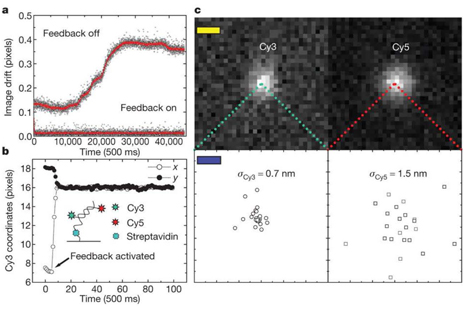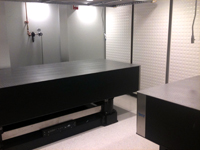Our mission is the development of a “new” generation of optical imaging technologies to enable advances in two hitherto difficult-to-investigate areas: the real-time analysis of macromolecular interactions and motions at the nanometer scale in vivo and the three-dimensional architecture of complex molecular machines and of subcellular ultrastructure, in situ. We are also refining and applying ultrahigh-resolution spectroscopy techniques to dissect multistep complex biochemical processes using in vitro reconstituted single-molecule assays.
Our knowledge of biological processes and mechanisms has vastly expanded over the past few decades. The traditional tools of biochemistry and molecular, cellular, and structural biology have enabled the identification of key components and interactions, provided snapshots of macromolecules as they function, and elaborated on the dynamic nature of biological pathways, linking structure to function. Often, major advances have been catalyzed by new or improved methods, coincident with the widespread application of such methods.
The enhanced capabilities of these new tools are harnessed to shed light into outstanding questions in molecular/cellular biology and in neuroscience. We are particularly interested in understanding the regulation of gene expression, as it occurs in the context of the nuclear architecture, and in the biology of cell-cell junctions, in particular the physiology of electrochemical transmission in neuronal synapses.

Research Infrastructure

Our laboratory features custom-engineered rooms that house our ultrahigh-resolution optical imaging and nanomanipulation instruments. The space is architecturally designed to minimize extrinsic disturbances during experiments. Additional feedback control systems achieve tight regulation of environmental parameters, to enable some of the most sensitive measurements performed at the single-molecule level to date.
The measurement rooms are complemented by adjacent dry area, dedicated to the construction and assembly of the instrumentation, as well as a fully equipped, state-of-the-art wet laboratory for biochemical and molecular/cell biology work.